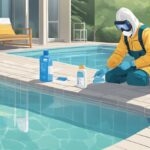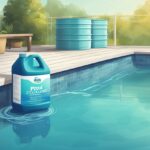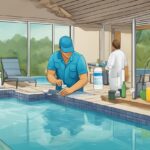Maintaining your hot tub involves a consistent balance of chemistry and diligence. Understanding the basics of hot tub chemicals is paramount for keeping your spa water clean, clear and comfortable. Proper water care ensures that not only is your hot tub experience pleasant but also that the longevity of your hot tub components is preserved.
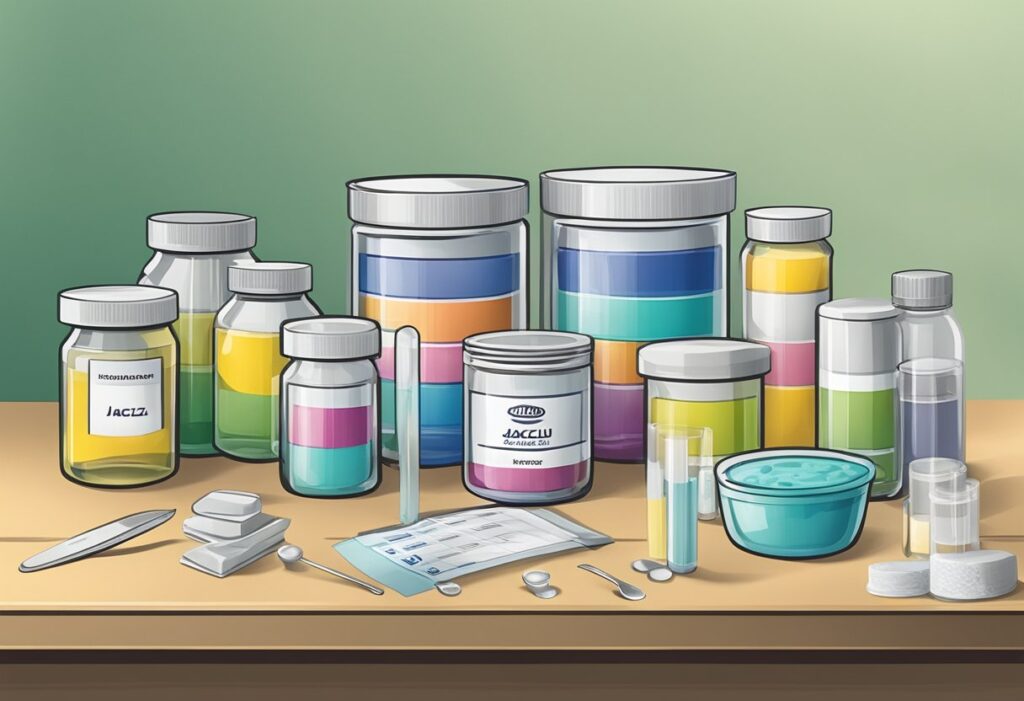
Sanitizers play a crucial role in hot tub maintenance, working to eliminate bacteria and other unwanted microorganisms. Ensuring that you regularly add the appropriate amount of sanitizer, such as chlorine or bromine, is essential for healthy spa water. Testing your water at least once or twice a week allows you to monitor the levels of sanitizer and maintain the delicate balance required for optimal water quality.
In addition to regular sanitization, it’s important to manage the pH levels of your hot tub water. If the water becomes too acidic or too alkaline, it can cause discomfort to users and potential harm to the hot tub’s system. Using pH increasers or decreasers as needed, in conjunction with alkalinity increasers, helps to stabilize the pH levels. With a clear and knowledgeable approach, you can ensure your hot tub remains a safe and inviting retreat.
Understanding Hot Tub Water Chemistry
Before you enjoy a relaxing soak, it is crucial to ensure your hot tub’s chemical levels are properly balanced. This will not only extend the lifespan of your jacuzzi but also provide a safe and comfortable experience.
Balancing pH and Alkalinity
Your hot tub’s pH level is fundamental to water quality. Aim for a pH range between 7.2 to 7.8. If your pH is too low, use a pH increaser to raise it, which will prevent corrosion and skin irritation. Conversely, if the pH is too high, add a pH decreaser to avoid scale formation and cloudiness. Similarly, total alkalinity is the buffering capacity of the water, and keeping it between 125 ppm to 150 ppm stabilises pH levels. To adjust, use an alkalinity increaser or decreaser as required.
- pH levels must remain within the ideal range.
- Total alkalinity should support stable pH balance.
Managing Sanitizers and Oxidizers
Sanitizers like chlorine or bromine are essential to keep the water clean by killing bacteria and other pathogens. You should test sanitizer levels regularly and aim for 1-3 ppm for chlorine or 3-5 ppm for bromine. Oxidizers, such as non-chlorine shock, eliminate organic contaminants and reduce chloramines, which are by-products of sanitization that can cause skin and eye irritation.
- Monitor sanitizer levels to maintain clear, safe water.
- Use an oxidizer weekly to break down chloramines and organic matter.
Preventing Common Water Issues
To prevent common water issues, maintain calcium hardness between 175 ppm to 250 ppm to protect your hot tub from corrosion or scaling. Enzymes can be added to break down non-living waste and reduce the workload on your sanitizers. Remember, regular water testing allows you to identify and address these issues promptly, ensuring your hot tub remains a haven of relaxation.
- Keep calcium hardness in the targeted range for equipment longevity.
- Add enzymes as part of your maintenance routine to degrade non-living waste.
Routine Hot Tub Maintenance
Executing routine maintenance on your jacuzzi is the cornerstone for ensuring a safe and enjoyable experience. This includes regular water testing, timely shock treatments, and diligent cleaning as well as changing the spa water when necessary. These steps are crucial for maintaining optimal water quality and preventing unwanted complications.
Regular Water Testing
You must test the water in your hot tub frequently to ensure it remains within the proper chemical balance. Use test strips or a liquid test kit to gauge the levels of pH, alkalinity, and sanitiser:
- pH: Aim for a range between 7.2 and 7.6. If the pH is too low, it can result in corrosion of equipment and irritation of your skin and eyes. If it’s too high, it can cause scale formation and cloudy water.
- Total Alkalinity: This should be kept between 80 and 120ppm to stabilise pH levels.
- Sanitiser Levels: For chlorine, keep levels between 3 and 5mg/l (milligrams per litre), and for bromine, maintain a range from 4 to 6ppm.
Test before and after each use and at least twice a week, even if your hot tub hasn’t been used.
Shock Treatments and Cleaning
Shock treatments are integral to your hot tub care routine. They involve adding a large dose of sanitizer, like chlorine shock or non-chlorine shock, to the water to break down organic contaminants and restore clarity:
- Chlorine Shock: Use it to swiftly eliminate bacteria and algae.
- Non-Chlorine Shock: Preferred when you want to oxidise contaminants without affecting sanitiser levels significantly.
Always follow the manufacturer’s instructions for dosage. After shocking, wait until the sanitiser level drops to the recommended range before using the hot tub again.
The efficacy of your maintenance routine can be improved by using a water clarifier to aid in keeping the water clear and preventing cloudiness.
Changing Spa Water
Even with meticulous maintenance, you’ll need to change out the water in your spa periodically. Generally, the water should be replaced every 3 to 4 months, depending on usage. When changing the water:
- Drain the hot tub according to the manufacturer’s instructions.
- Clean the shell of the hot tub to remove any residue or biofilm.
- Refill with fresh water and adjust the chemicals to the recommended levels, starting with the alkalinity, then the pH, and finally the sanitiser.
Regular water changes prevent the build-up of total dissolved solids (TDS), which can interfere with water balance and sanitiser effectiveness. After refilling, retest the water and adjust chemicals as needed to ensure your spa is safe for use.
Addressing Specific Contaminants
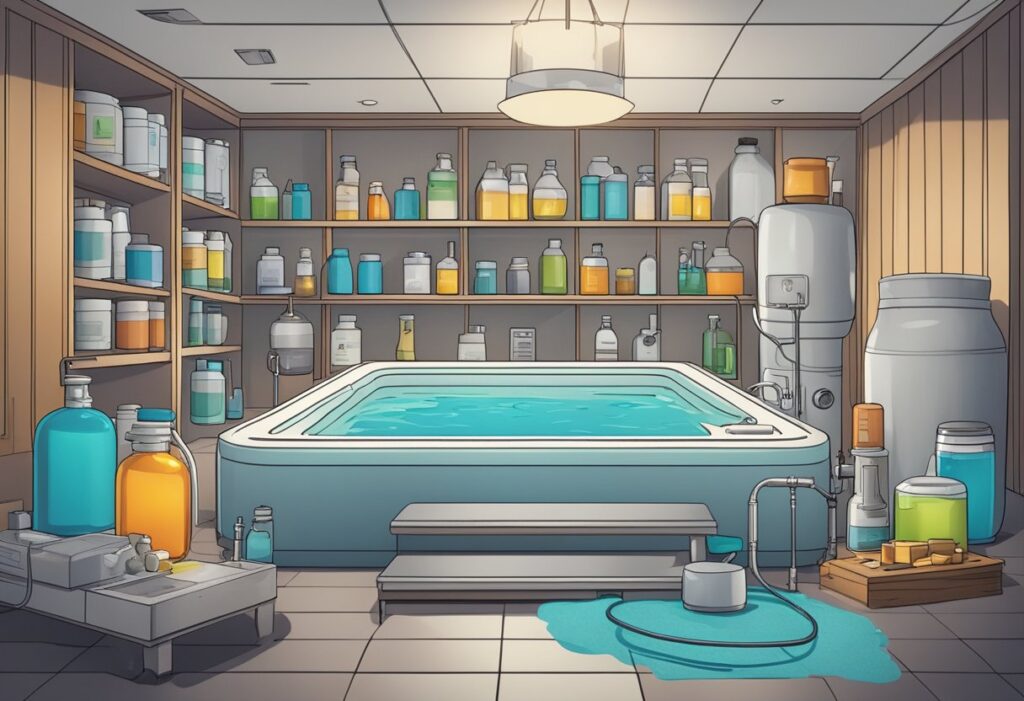
When managing your Jacuzzi’s water quality, it’s essential to understand how to specifically target and neutralise various contaminants like algae, bacteria, metals, and viruses. Each type of contaminant requires a different approach to ensure your spa remains hygienic and safe for use.
Controlling Algae and Bacteria
Algae and bacteria can quickly turn your Jacuzzi into an uninviting environment. To combat algae, regularly add algaecides to the water, alongside maintaining appropriate sanitizer levels with chemicals such as chlorine or bromine. For bacteria, consistent sanitisation is key. Ensure you maintain the correct level of sanitizers and keep pH levels balanced, as bacteria thrive in unbalanced water.
- Sanitizers: Use chlorine or bromine to kill bacteria.
- Algaecides: Apply these to eliminate and prevent algae growth.
- pH Level: Regularly test and adjust to keep water between 7.2 and 7.6.
Monitoring these levels is vital, and utilising test strips can make this task straightforward, giving you immediate feedback on the water’s chemical composition.
Dealing with Metals and Viruses
Metals such as iron and copper can enter your Jacuzzi through tap water and erode fixtures, leaving stains and affecting water quality. Metal sequestrants are specifically designed to bind with metals, preventing deposits.
- Metal Sequestrants: Add these to your water to mitigate metal contamination.
Conversely, viruses present a different challenge, as they are particularly resilient. While a well-balanced Jacuzzi with a consistent level of sanitizers will significantly reduce the risk of viruses, supplementing with a spa shock treatment can help ensure they are effectively eradicated.
- Spa Shock: Use non-chlorine shock treatments to destroy organic compounds without altering sanitizer levels.
In your routine maintenance, include spa-specific clarifiers to help coagulate tiny particles—like those from dead algae or disrupted viruses—for easier filtration and removal.
- Clarifiers: Introduce these to improve filter effectiveness and enhance water clarity.
Choosing the Right Chemicals for Your Hot Tub
To maintain a healthy and enjoyable hot tub experience, selecting the appropriate sanitizers and additives is essential. Your choice will impact the water balance, clarity, and overall safety.
Chlorine Versus Bromine
Chlorine is the most popular hot tub sanitizer. It’s reliable at eliminating bacteria and keeping water clean. As a hot tub owner, you have various chlorine-based products at your disposal, like dichlor which dissolves quickly or slow-dissolving trichlor tablets that provide a steady release of sanitizer.
- Pros: Fast-acting, widely available, and cost-effective.
- Cons: Can be irritating to skin and eyes in high concentrations; strong odour.
Bromine is another effective sanitizer. It works particularly well in the higher temperatures found in hot tubs and is gentler on sensitive skin.
- Pros: Less odour than chlorine, longer-lasting in hot water, less affected by pH fluctuations.
- Cons: Generally more expensive, may require an oxidation shock more frequently to activate.
Alternative Sanitizers and Additives
Biguanide is a non-chlorine sanitizer that eliminates bacteria without the use of chlorine or bromine. Its popularity stems from its ability to maintain water clarity and softness.
- Pros: Fewer odours, gentle on skin and eyes.
- Cons: Incompatible with chlorine and bromine, can be more costly.
A salt system, or salt water hot tub, uses a process called electrolysis to generate chlorine from salt, which sanitises the water.
- Pros: Softer on skin, more consistent chlorine levels, less chemical handling.
- Cons: Initial installation can be expensive, salt cells require periodic replacement.
Minerals like silver or copper can be used as supplemental sanitizers. They can reduce the required amount of traditional sanitizer and provide an added layer of protection against bacteria.
- Pros: Reduces chemical use, easy to maintain, can enhance water feel.
- Cons: Does not replace the need for a primary sanitizer, effectiveness can vary.
When choosing between chlorine and bromine, consider that free chlorine levels should typically be maintained between 1.5 and 3 parts per million (ppm), whereas bromine levels should be between 3 and 5 ppm. Regular testing of your hot tub water using test strips or a test kit will guide you in managing these levels effectively.


